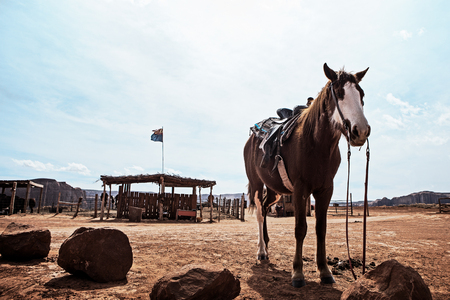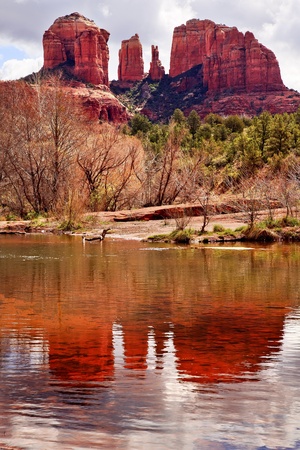
Red Rock Country is not only a place filled with some of the most idyllic natural landscapes and scenic hiking trails in the United States, but it’s also has been a diamond in the rough as far as the American (and international) film industry is concerned. Sedona’s influence on the genre of Western film, in particular, has provided film critics and historians a key to the past.
In our upcoming posts, we will study a few of the Western films a little more closely to understand the Native American perspective on the film industry, and we will explore how Sedona carved a niche for itself as “Little Hollywood.”
The Kaiser of California (1936)

Monument Valley on the Arizona-Utah border.
Recounted from the European point-of-view, Der Kaiser von Kalifornien as it is known in German and The Kaiser of California as it is translated into English was the first Western to be filmed in Sedona. The Grand Canyon area to be specific, but the extent of its influence reaches farther than the borders of Red Rock Country. The Kaiser of California is a narration of the Johann Augustus Sutter story. Sutter was a German pioneer who was responsible in part for the California Gold Rush. The film takes the spin of German Nationalism, but leaves out the destructive ideology of the Nazi Third Reich. It instead romanticizes some Fascist aspects of German culture. Director Luis Trenker was in no way a Fascist, but he did gain the respect of many Fascists of the time. The lead character also befriends the Native Americans, who are portrayed as assets and not enemies. The film is also history-making in that it is one of the first movies to avoid the framing of Native Americans as savages.
Stagecoach (1939)
This John Ford film is unique as it was one of the first Westerns to be filmed in Monument Valley, which spans the Arizona-Utah border. The film is credited with strengthening the acting credentials of John Wayne, who went on to a successful acting career in over 76 films. Stagecoach was one of many Westerns which stereotyped Native Americans, and in that respect it did nothing to transform the genre. The film was able to raise the bar artistically as it provided an in-depth dramatization of life on the frontier with a skillfully written screenplay. The film’s plot brought together a group of strangers aboard a stagecoach that veered into a sudden Apache uprising, making for a thrilling outlaw adventure.
Broken Arrow (1950)
Also revered as one of the first Western films to portray Native Americans in a sympathetic manner, Broken Arrow is a heroic tale from the Apache War period directed by Delmer Daves. The role of the Apache War chief Cochise was played by Jeff Chandler, a white actor; this type of casting was normal for earlier Western films. Chandler’s portrayal was considered particularly of impact because he came across unbiased, winning him an Oscar nomination for Best Supporting Actor. The Western, filmed completely in Technicolor, shows scenes from Red Rock Country. Although the Native American chief was not portrayed by a true Native man, the film cast Apache tribe members from the Fort Apache Indian Reservation for authentic appeal.
For a contemporary look at the art forms of the Southwestern tribes of Arizona, visit Kachina House on your travels. From there you can explore some nearby landmarks that have made their entrance into genre-defining Western films of American history.


